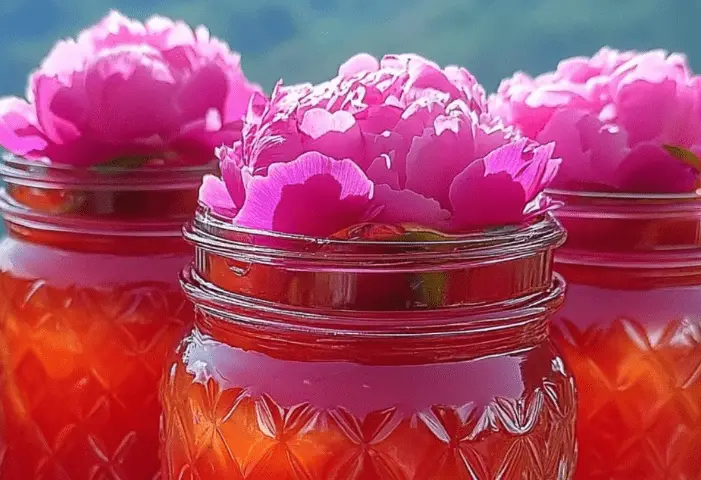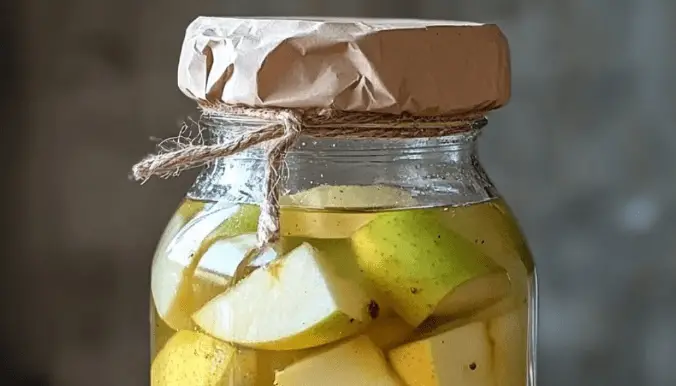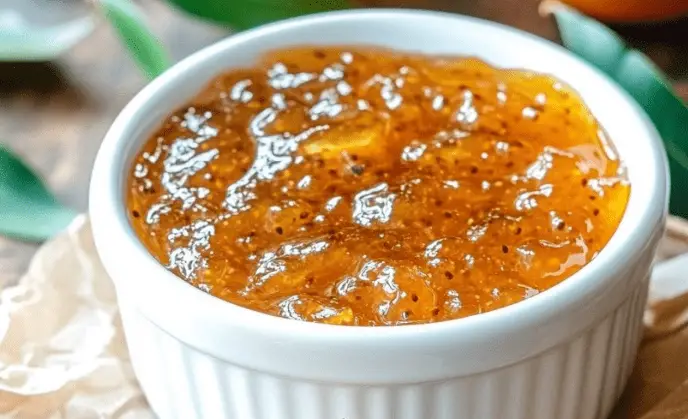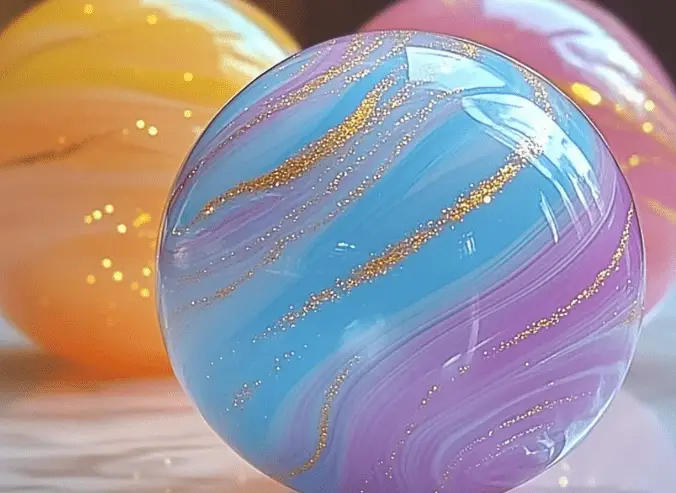Peony Jelly: A Beautiful and Flavorful Homemade Treat for Spring
There is something truly enchanting about preserving the fleeting beauty of spring flowers into a delicious homemade jelly. Peony Jelly captures the essence of springtime with its soft floral notes, delicate color, and sweet flavor. Perfect for spreading on toast, drizzling over pancakes, or adding a touch of elegance to desserts, this charming jelly turns an ordinary snack into a celebration of nature’s beauty. Making Peony Jelly at home is a simple yet deeply rewarding craft that allows you to savor spring long after the flowers have faded.
Table of Contents
Ingredients
To make Peony Jelly, you will need:
- 3 to 4 cups peony petals
- 4 cups water
- 2 tablespoons lemon juice
- 1 box (1.75 oz) powdered pectin
- 4 cups sugar
Instructions
- Start by pouring boiling water over the beautifully fragrant peony petals. Let the petals steep for about 10 minutes to create a rich floral infusion that will form the base of your jelly.
- After steeping, strain the mixture carefully to remove all petals, capturing only the lovely floral tea.
- In a large pot, combine the strained peony tea and the lemon juice. Bring this mixture to a rolling boil. The addition of lemon juice helps to brighten the flavor and enhances the natural color of the jelly.
- Once boiling, sprinkle in the powdered pectin. Stir well and bring the mixture back to a boil for just one minute to activate the pectin and start the gelling process.
- Add the sugar and stir thoroughly to ensure it is fully dissolved. Bring the mixture back to a lively boil for another minute, allowing it to become well blended and syrupy.
- Carefully ladle the hot jelly into sterilized jars, leaving about 1/4 inch of headspace at the top to allow for expansion.
- If you wish to preserve your jelly for longer storage, process the jars in a water bath canner for about 10 minutes. This step is optional but highly recommended to ensure the jelly remains fresh.
- Allow the jars to cool at room temperature. Once cooled, the jelly is ready to enjoy.
Benefits of This Craft
Making Peony Jelly offers more than just a delicious spread. It connects you with the natural world by using fresh, seasonal flowers in a creative and meaningful way. Crafting jelly at home provides an opportunity to avoid artificial preservatives and additives commonly found in store-bought jams. Additionally, creating this jelly is a wonderful way to preserve the fleeting beauty of peony season, allowing you to enjoy the taste of spring throughout the year. The process also introduces valuable kitchen skills like sterilizing jars, making floral infusions, and canning, which can be used in countless future projects.
Tips
Always use peony petals from organically grown flowers that are free of pesticides and other chemicals. Choose blossoms that are fully opened but still vibrant for the best flavor and color. When steeping the petals, make sure the water is just boiling to avoid overcooking the delicate flowers. Adjust the amount of lemon juice slightly depending on the natural color of your peony tea to achieve the prettiest hue. When canning, ensure jars and lids are properly sterilized to prevent contamination. A funnel can be very helpful when ladling the hot jelly into jars to keep the rims clean and prevent spills.
What Taste Look Like
Peony Jelly offers a flavor that is subtly floral, slightly fruity, and delicately sweet. It is less perfumed than rose-based products but has a light, refreshing taste that evokes the freshness of spring gardens. The texture is smooth and glossy, spreading easily over bread, pastries, or desserts. The color can vary from soft pink to a more vibrant rose tone, depending on the variety of peony used and the amount of lemon juice added. Visually, Peony Jelly is stunning in clear jars, catching the light and showcasing its beautiful, jewel-like appearance.
How to Store
Once the jars of Peony Jelly have cooled completely, store them in a cool, dark place such as a pantry or cupboard. Properly processed and sealed jars can last up to one year. After opening, store the jelly in the refrigerator and consume it within three weeks for the best flavor and texture. If you do not process the jars in a water bath canner, they should be kept refrigerated and used within one month. Always check the seal before consuming canned goods, and discard any jars with compromised seals or signs of spoilage.
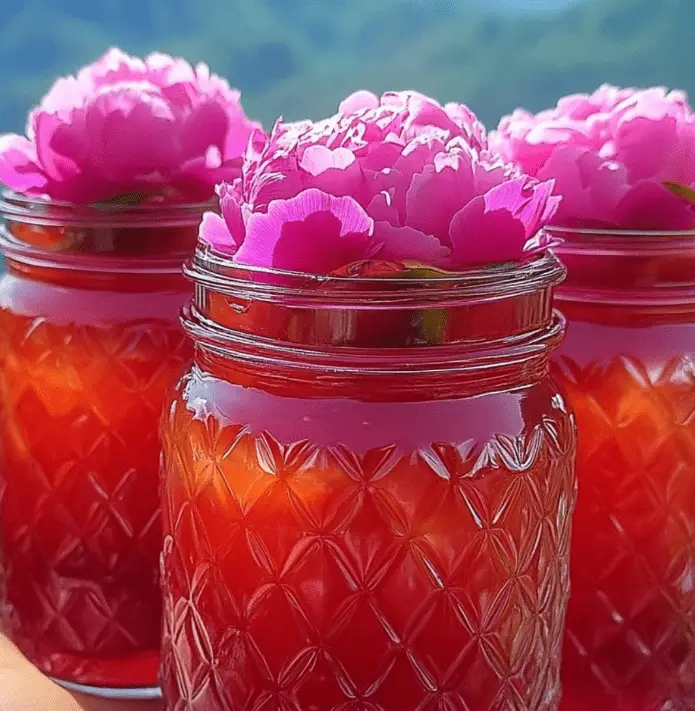
Peony Jelly is a delightful way to capture the essence of spring in a sweet, floral spread. This homemade treat is not only beautiful to look at but also offers a unique flavor experience that cannot be found in store-bought products. Whether you enjoy it on toast, with pancakes, or as a garnish for elegant desserts, Peony Jelly adds a touch of charm and sophistication to any meal. The process of making this jelly is simple, rewarding, and a perfect way to celebrate the fleeting beauty of the season. Embrace this timeless craft and enjoy the delightful taste of spring all year long.
For More DIY craft ideas, visit More DIY craft ideas.
You can also find additional inspiration on Pinterest, where you will discover a wide variety of creative jelly recipes and floral preserves that celebrate the beauty of nature.
FAQ
Can I use any type of peony for this jelly?
Not all peonies are edible. Use only organically grown peonies that are confirmed to be safe for consumption. Avoid any treated with pesticides.
Can I reduce the sugar in this recipe?
This recipe relies on the correct sugar-to-pectin ratio for proper gelling. Reducing sugar may affect the final texture. If you wish to use less sugar, consider using a low-sugar pectin specifically designed for such adjustments.
Can I make this jelly without a water bath canner?
Yes, but the jelly will need to be refrigerated and consumed within one month if it is not processed in a canner.
What other flowers can I use to make floral jelly?
Other edible flowers like rose, lavender, and elderflower can also be used to make delicious and fragrant jellies.
How do I know if my jelly has properly set?
After cooling, the jelly should have a firm but spreadable consistency. If it is too loose, you can reprocess it by reheating and adding a bit more pectin.

